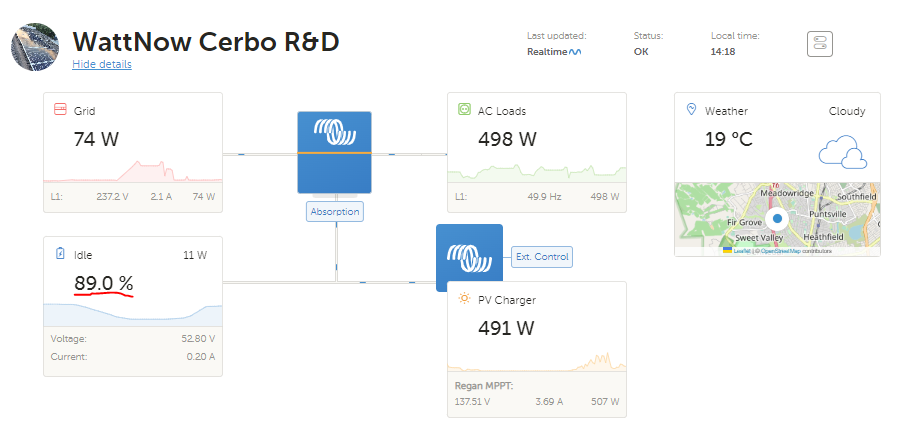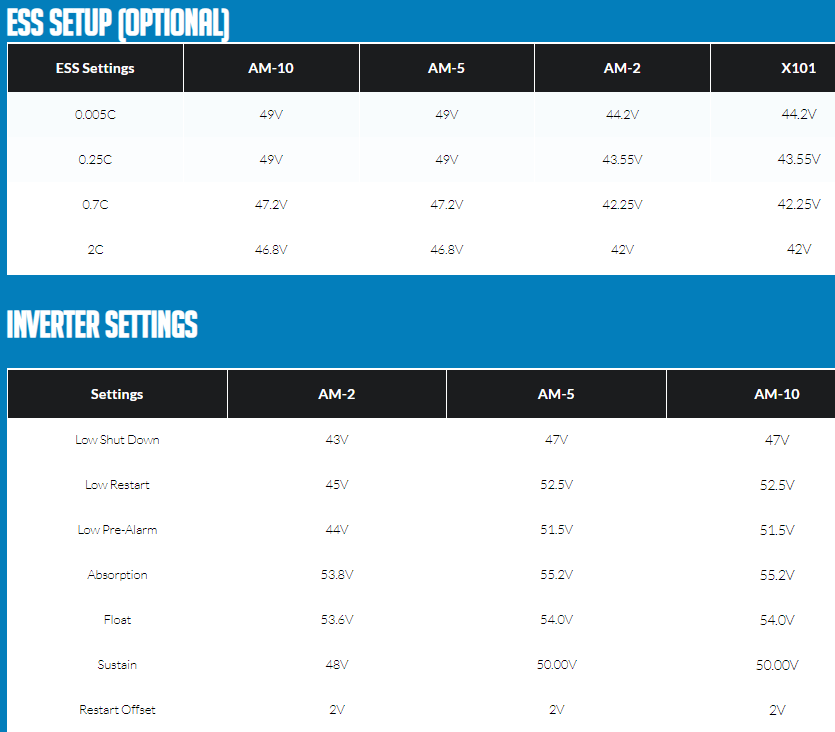Hi Community
- Multiplus MultiPlus-II 48/3000/35-32 Firmware version 497
- MPPT BlueSolar Charger MPPT 150/70 rev2 Firmware version v3.11
- Battery Hubble Lithium 5.4kVA AM2 103Ah
- Sensor: Victron CT Clamp connected to 3.5mm sensor socket (20m)
- Battery Cables (balanced) 35mm2
- ESS installed
I’ve been trying to get a 3Kva Multi to get to a full SOC using the internal battery monitor.
It seems to peek at around 85% even if I increase the charge voltages. This only started when I added a 150/70 MPPT and some solar. The MPPT settings are identical to the inverter. The Charge gets ‘throttled’ at around 85%. If I choose ‘Keep Batteries Full” I can get the charge to 95%.
If I connect the battery via a CAN interface (using a RIOT cloud link adaptor supporting Victron-enhanced CAN protocol on the Hubble) I can get SOC 95%.
The battery SOC jumps (within a few seconds) from 85% (internal) to 98% on CAN.
I’ve tried every permutation of battery setting from Victron & the manufacturer. I've asked several experienced Victron installers to check my settings, but I still seem to have an issue.
Any suggestion would be most welcome.
Regard Alan



RT NewBatt Voltages 10-oct-22 c0619ab201a6_inst_ttyS4_Interfaces_Mk2_Tunnel (10).zip
